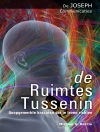Tarot cards have been around since the Renaissance and have become increasingly popular in recent years, often due to their prevalence in popular culture. While Tarot means many different things to many different people, the cards somehow strike universal chords that can resonate through popular culture in the contexts of art, television, movies, even comic books. The symbolism within the cards, and the cards as symbols themselves, make Tarot an excellent device for the media of popular culture in numerous ways. They make horror movies scarier. They make paintings more provocative. They provide illustrative structure to comics and can establish the traits of television characters.
The Cards: The Evolution and Power of Tarot begins with an extensive review of the history of Tarot from its roots as a game to its supposed connection to ancient Egyptian magic, through its place in secret societies, and to its current use in meditation and psychology. This section ends with an examination of the people who make up today’s Tarot community. Then, specific areas of popular culture—art, television, movies, and comics—are each given a chapter in which to survey the use of Tarot. In this section, author Patrick Maille analyzes such works as
Deadpool,
Books of Magic by Neil Gaiman, Disney’s
Haunted Mansion,
Sherlock Holmes: Game of Shadows,
The Andy Griffith Show,
Buffy the Vampire Slayer, and
King of the Hill. The cards are evocative images in their own right, but the mystical fascination they inspire makes them a fantastic tool to be used in our favorite shows and stories.
Despre autor
Patrick Maille got his doctorate in history at Texas Tech University, writing a dissertation on early Christianity and magic. He taught history courses, including one on the history of magic, for almost twenty years at Oklahoma Panhandle State University before becoming Dean of Arts and Sciences at Pueblo Community College in 2024.












